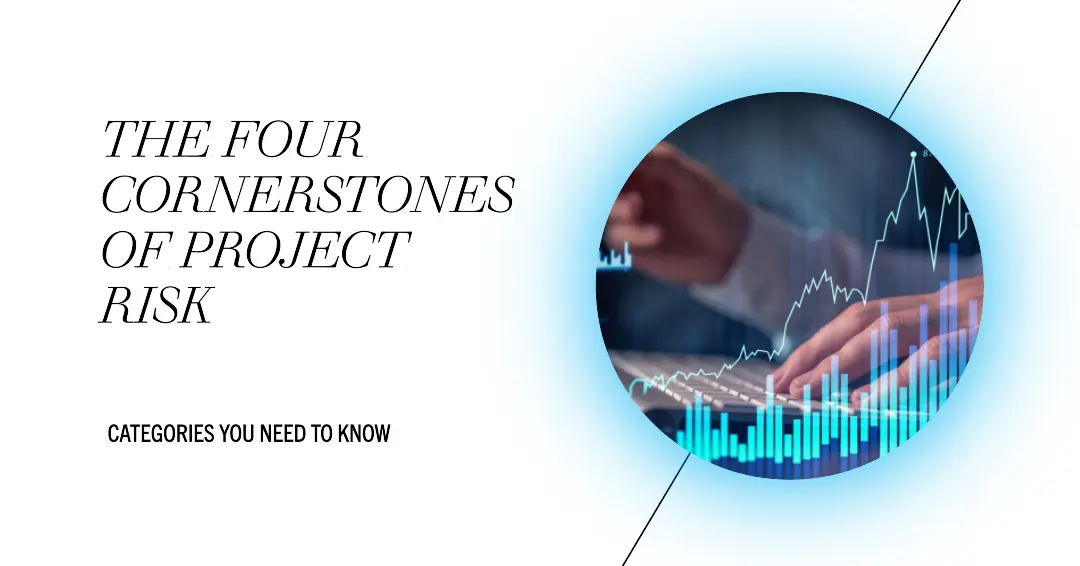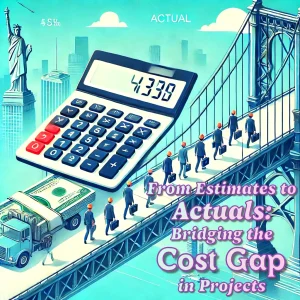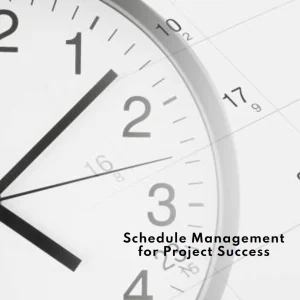I. Introduction
Hello, fellow project managers and risk enthusiasts! I hope you’re as excited as I am to dive into the fascinating world of project risk management. As you know, the success of any project largely depends on our ability to identify, assess, and mitigate risks that could derail our carefully laid plans. That’s why understanding the different categories of project risk is crucial to achieving our project goals and keeping stakeholders happy.
In today’s blog post, we’re going to explore the four major categories of project risk that every project manager should be aware of. These are the building blocks – or should I say, the cornerstones – of effective risk management. By understanding and addressing these categories, we can significantly improve our risk management practices and increase the chances of project success.
But before we jump into the nitty-gritty, I’d like to share a personal anecdote that inspired me to delve deeper into project risk management. A few years ago, I was leading a complex software development project with an aggressive timeline. Although we had a fantastic team and a well-thought-out plan, we faced a series of unexpected technical and organizational challenges. These challenges, which could have been better managed with a more robust understanding of the different risk categories, ultimately led to delays and cost overruns.
So, let’s make sure we don’t fall into the same trap! Join me as we embark on this journey to explore the four cornerstones of project risk: technical, organizational, external, and financial risks. Together, we’ll learn how understanding these categories can help us manage and mitigate risks more effectively, and set our projects up for success.
Grab a cup of coffee (or your beverage of choice), and let’s dive in!
II. Technical Risks
Welcome back, my fellow risk aficionados! Now that we’ve set the stage with a brief introduction to the importance of understanding the four cornerstones of project risk, let’s dive into the first category: technical risks.
Technical risks are those that stem from the technical aspects of your project, like design, engineering, technology, or integration. These risks can manifest in many ways, such as unexpected complications, design flaws, or unforeseen limitations in the technology being used. As a project manager, I’ve faced my fair share of technical risks – from software bugs to compatibility issues, and everything in between.
Let me share a story to illustrate this point. I once worked on a project where we were tasked with integrating two different software systems. We thought it would be a relatively straightforward process, but as we delved deeper, we discovered that the two systems had fundamental architectural differences, making the integration far more challenging than anticipated. If we had been more aware of the potential technical risks, we could have planned better and saved a lot of time and effort.
So, what are the common causes of technical risks? They can stem from a variety of sources, such as inadequate requirements, untested technology, overly optimistic estimates, or insufficient technical expertise within the team. It’s essential to be aware of these causes so that we can proactively address them.
Now, you might be wondering how you can identify and mitigate technical risks effectively. Here are some techniques that have helped me in my projects:
- Thorough requirements analysis: Make sure you have a clear understanding of the project’s requirements and scope. This helps in identifying potential technical challenges early on.
- Proof of concept or prototyping: Test out new technologies, designs, or approaches before fully committing to them. This can help you identify potential issues and make necessary adjustments.
- Regular technical reviews: Conducting periodic technical reviews with your team and stakeholders can help uncover hidden risks and allow for timely course corrections.
- Skilled team members: Ensure that your team has the necessary technical expertise to handle the project’s challenges. If needed, invest in training or bring in external experts to fill any gaps.
By understanding and addressing technical risks, we can significantly increase the likelihood of our projects running smoothly and achieving their intended outcomes. In the next section, we’ll explore another cornerstone of project risk management: organizational risks. Stay tuned, and let’s continue our journey together!
III. Organizational Risks
Hello again, risk management enthusiasts! We’ve already covered the intriguing world of technical risks, but our journey doesn’t end there. It’s time to tackle another cornerstone of project risk management: organizational risks. Trust me, this one hits close to home for many of us.
Organizational risks are those that arise from within your organization, such as resource allocation, team dynamics, communication, or company culture. These risks can impact the overall performance and effectiveness of your project. I’m sure many of you have experienced the frustration of dealing with internal conflicts, bureaucracy, or even office politics that have derailed your projects in one way or another.
Let me share a personal experience to illustrate the importance of managing organizational risks. In one of my previous projects, we faced a significant challenge with interdepartmental communication. Different departments had different priorities, and our project’s needs were often pushed to the back burner. As a result, we faced delays in obtaining the necessary approvals and resources, which ultimately affected our project timeline and budget.
So, what causes organizational risks? They can stem from several factors, including unclear roles and responsibilities, inadequate communication, lack of stakeholder buy-in, and misaligned priorities. Being aware of these factors can help us proactively address them and minimize their impact on our projects.
Now, let’s talk about some practical techniques for identifying and mitigating organizational risks:
- Clear roles and responsibilities: Establish and communicate clear roles and responsibilities for your team members and stakeholders. This helps prevent confusion and ensures that everyone is on the same page.
- Open and transparent communication: Encourage open and transparent communication within your team and with stakeholders. Regular meetings, status updates, and open channels for feedback can help identify potential issues before they become critical.
- Stakeholder engagement: Engage with stakeholders throughout the project and actively seek their input and support. This helps build trust and ensures that everyone’s priorities and concerns are taken into account.
- Prioritization and alignment: Work with your team and stakeholders to align project priorities and ensure that the necessary resources are allocated to address the most critical tasks and risks.
By understanding and addressing organizational risks, we can create a more collaborative and supportive environment for our projects, ultimately increasing the chances of success. In the next section, we’ll tackle the fascinating realm of external risks. Stay with me as we continue our deep dive into the four cornerstones of project risk management!
IV. External Risks
Welcome back, my fellow risk management explorers! We’ve conquered technical and organizational risks, but our journey is far from over. It’s time to venture into the unpredictable world of external risks – those risks that originate outside of your organization and are often beyond your direct control. Sounds intimidating, right? But don’t worry, we’ll tackle this together.
External risks encompass a wide range of factors, such as market conditions, regulatory changes, natural disasters, or even global pandemics (yes, we’ve all been there). These risks can have a significant impact on your project’s timeline, budget, and overall success. As project managers, we can’t always control external risks, but we can certainly prepare for them and mitigate their impact as much as possible.
Allow me to share a story that highlights the importance of addressing external risks. A few years ago, I was managing a project to launch a new product in the international market. We had meticulously planned every aspect of the project, but we didn’t account for a sudden change in import regulations in one of our target countries. This unexpected turn of events forced us to rethink our entire launch strategy and led to significant delays and additional costs.
So, what causes external risks? They can arise from various sources, such as economic fluctuations, political instability, legal and regulatory changes, or natural disasters. Being aware of these factors can help us anticipate potential challenges and develop contingency plans to minimize their impact on our projects.
Now, let’s discuss some effective techniques for identifying and mitigating external risks:
- Environmental scanning: Regularly monitor the external environment for potential risks, such as changes in market conditions, emerging trends, or new regulations. This can help you anticipate and prepare for potential challenges.
- Contingency planning: Develop contingency plans for key external risks, such as alternative suppliers, backup communication channels, or additional funding sources. This can help you respond quickly and effectively when unexpected events occur.
- Risk transfer: In some cases, it may be beneficial to transfer the risk to a third party, such as through insurance or contractual agreements. This can help protect your project from significant losses due to external risks.
- Flexibility and adaptability: Cultivate a culture of flexibility and adaptability within your team, so that you’re better prepared to adjust your plans and respond to changes in the external environment.
By understanding and addressing external risks, we can build more resilient and adaptive projects that can weather even the most unpredictable storms. In the next section, we’ll dive into the final cornerstone of project risk management: financial risks. Stick with me as we complete our journey through the four cornerstones of project risk!
V. Financial Risks
We’ve come a long way, exploring technical, organizational, and external risks. But we still have one more cornerstone of project risk management to uncover: financial risks. As you might have guessed, this one is all about the money – an essential aspect of any project.
Financial risks are those associated with the financial aspects of your project, such as budget overruns, inaccurate cost estimates, currency fluctuations, or funding issues. These risks can have a significant impact on your project’s overall success, as financial constraints often lead to tough decisions and trade-offs. I’m sure many of you have experienced the stress of managing tight budgets and making every dollar count.
Let me share a personal example to illustrate the importance of managing financial risks. In one of my projects, we encountered unexpected costs due to a change in the scope of work. This led to a budget overrun, which forced us to make some difficult decisions about which aspects of the project to prioritize and which to cut. If we had been more aware of the potential financial risks, we could have better managed our budget and avoided some of the tough choices we had to make.
So, what causes financial risks? They can stem from various factors, such as inaccurate cost estimates, scope creep, resource constraints, or market fluctuations. Being aware of these factors can help us proactively address them and minimize their impact on our projects.
Now, let’s discuss some practical techniques for identifying and mitigating financial risks:
- Accurate cost estimation: Invest time and effort in developing accurate cost estimates for your project. This helps set realistic expectations and ensures that you have a solid financial foundation for your project.
- Regular budget monitoring: Keep a close eye on your project budget and track actual expenses against planned expenses. This allows you to identify potential budget overruns early on and take corrective action.
- Contingency reserves: Include contingency reserves in your project budget to account for unexpected expenses or changes in scope. This provides a financial cushion to help you navigate unforeseen challenges.
- Risk-aware decision-making: Incorporate financial risk considerations into your decision-making process, such as evaluating the cost implications of different options or assessing the potential financial impact of risks.
By understanding and addressing financial risks, we can better manage our project budgets and increase the chances of delivering successful outcomes. In the next section, we’ll bring everything together and discuss how to apply the four cornerstones of project risk in practice. Stay with me as we wrap up our journey through the fascinating world of project risk management!
VI. Applying the Four Cornerstones of Project Risk in Practice
Congratulations, risk management warriors! We’ve navigated the realms of technical, organizational, external, and financial risks, uncovering valuable insights along the way. But our journey doesn’t end here – it’s time to put these cornerstones into practice and elevate our risk management game to new heights.
So, how do we integrate these four categories of risk into our risk management process? The key lies in adopting a holistic approach, recognizing that each category is interconnected and plays a crucial role in the overall success of our projects. Let’s explore some strategies to bring these cornerstones to life in our day-to-day project management activities.
- Comprehensive risk assessment: When assessing risks, be sure to consider all four categories. Encourage your team to think beyond their immediate areas of expertise and consider the bigger picture. This comprehensive approach will help you identify risks that might otherwise fly under the radar.
- Prioritization and mitigation: As you develop your risk management plan, prioritize risks based on their potential impact and likelihood, taking into account all four categories. This will help you allocate resources effectively and focus on the most critical risks. Don’t forget to develop mitigation strategies that address the unique characteristics of each risk category.
- Risk monitoring and review: Regularly review and update your risk management plan, paying attention to changes in the project environment and any new risks that may emerge. This ongoing monitoring will help you stay on top of the ever-evolving risk landscape and make timely adjustments as needed.
- Collaborative risk management: Encourage open communication and collaboration among your team members and stakeholders when it comes to risk management. By fostering a culture of risk awareness, you’ll create an environment where everyone feels empowered to identify, assess, and address risks proactively.
And finally, here are a few tips for effective risk communication within your team:
- Be transparent about risks and their potential impact on the project.
- Create a safe space for team members to discuss risks openly and honestly.
- Encourage the sharing of lessons learned from past projects and risk management experiences.
- Establish a common language for discussing risks to ensure clear and consistent communication.
By applying the four cornerstones of project risk in practice, we can create a robust risk management framework that empowers us to navigate the uncertainties and complexities of our projects with confidence. As we conclude our journey, remember that risk management is an ongoing process – one that requires continuous learning, adaptation, and improvement. Together, let’s embrace the challenges and opportunities that lie ahead and forge a path to project success!
VII. Conclusion and Key Takeaways
Wow, what an adventure it has been, dear risk management enthusiasts! Together, we’ve explored the fascinating world of project risk management, delving into the four cornerstones – technical, organizational, external, and financial risks – that form the foundation of successful risk management practices.
As we wrap up our journey, let’s take a moment to reflect on some key takeaways that can help us become better project managers and risk management champions:
- Embrace a holistic approach: Recognize the interconnected nature of the four risk categories and incorporate them into every aspect of your risk management process. This will help you develop a comprehensive understanding of the risks your project faces and address them more effectively.
- Cultivate a risk-aware culture: Encourage open communication, collaboration, and learning when it comes to risk management. By fostering a risk-aware culture within your team and organization, you’ll empower everyone to proactively identify, assess, and address risks.
- Be proactive and adaptive: Effective risk management requires ongoing monitoring, review, and adaptation. Stay vigilant for changes in your project environment and be prepared to adjust your risk management strategies as needed.
- Learn from experience: Take the time to reflect on your past projects and risk management experiences. Learn from your successes and failures, and use these insights to continuously improve your risk management practices.
I hope that our exploration of the four cornerstones of project risk has provided you with valuable insights and practical strategies to enhance your risk management skills. As we conclude, remember that risk management is not a one-time exercise but rather an ongoing process that requires commitment, learning, and growth.
Thank you for joining me on this exciting journey, and here’s to your continued success in managing risks and delivering outstanding project outcomes! Stay curious, keep learning, and let’s continue to conquer the world of project risk management together!
To find out how Artificial Intelligence is changing the Project Management landscape, you have enjoy reading this article https://www.shaunstoltz.com/did-artificial-intelligence-just-change-everything-about-project-management/
Find out more about Shaun Stoltz https://www.shaunstoltz.com/about/
This post was written by an AI and reviewed/edited by a human.



